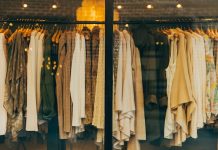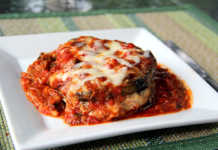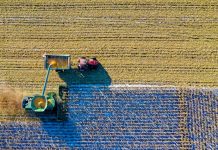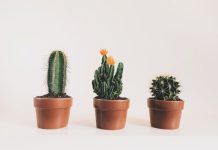In an ever changing and fast-paced society, things are half-done, corners are cut, and prices are rising. In the industry of fashion, things change quickly- one trend becomes another and outdated mass-produced pieces are tossed aside to be found in a dark gloomy section of an op-shop, if not, landfill.
This isn’t good for the environment, in a way where fast fashion companies are spending too much time overusing resources that aren’t being cultivated and replaced fast enough, nor are they considering ethical working conditions of the factories they use and procedures within creation (not naming names though). Thankfully, as fashion moves forward at the fastest speed possible, some independent Australian designers are taking a step back to create affordable, exclusive yet sustainable collections that are still chic, but ethically better for the industry and our world.
Independent designers are now bringing attention to the term ‘slow fashion,’ a movement that doesn’t regulate mass production, but custom-made, sustainable services for their pieces. For personalisation and customisation, this kind of investment is seeing much success for the new generation in the industry. This concept follows the same business model as luxury houses, where pieces tend to be made exclusively to only a handful of colours, sizes and styles to save money and space, the expense reflecting the handicraft and raw materials used, but ultimately a piece to keep in the wardrobe for years to come. The rise of slow fashion is about having the choice to buy less and be smarter with more personal pieces that are one of a kind and well done with the highest quality (and locally gathered) materials.
While it may not sit on the same pedestal as luxury wear, money is still wisely spent in a conscious manner of being ethically friendly and moving away from fast fashion production in a state of saving the environment. The more we, as a society and consumers, help independent designers, the more we move away from manufacturing procedures that have come to be questionable. Just think back to 2013 when a factory in Bangladesh collapsed with hundreds of people losing their lives due to unsafe and unfair working conditions that of mass production.
Therefore independent and less established (read: major) labels who are just starting out who use this made-to-order procedure not only offer the personalised ‘one-off’ pieces for clients, but also offer a very cost effective and profitable system without having to contribute to huge production numbers, which could be a hit or miss with little or even no sales at all. This means there’s no environmental blowout from unsold garments that will be tossed aside.
To emphasise the importance and impact of slow fashion, even Tilda Swinton and Oliver Saillard took to the stage earlier in the year with a performance called ‘Cloakroom’, which elaborated on the idea of being sustainable with garments.
“Clothes outlive us very, very often. Even when a body is gone, clothes are still here. And there’s a tradition of people inheriting clothes – in Scotland, people tend to wear their grandfather’s kilts. That feeling of clothes being passed down from generation to generation. It’s only just been recent that our society has this tendency for everything to be new and for old things to be discarded,” Swinton said.
A handful of Australian designers are going all out with this movement and many stylish consumers are looking towards independent labels offering more affordable and personalised services. These are the top three labels making a difference in the name of slow fashion.
Kuwaii
![Kuwaii Womenswear Fashion 2012 [image source: fashionreview.com], crowd ink, crowdink, crowdink.com, crowdink.com.au](http://crowdink.com/wp-content/uploads/2016/08/kuwaii-womenswear-fashion-2012-02.jpg)
Not only is Kuwaii extremely sustainable, they allow consumers to be a large part of the customisation of their clothing. With a very positive relationship with their manufacturers, consumers are able to closely customise what they want from finishes to final appearances.
Bhalo
![Bhalo [image source: bhaloshop.com], crowd ink, crowdink, crowdink.com, crowdink.com.au](http://crowdink.com/wp-content/uploads/2016/08/12226938_10154288462006124_7525722725627184941_n.jpg)
Buyers will be delighted to know that each piece of clothing is ethically handmade using several traditional and slow production methods such as hand-loomed cotton fabrics (and that has zero carbon footprint!)
Vege Threads
![Vege Threads [image source: vegethreads.com], crowd ink, crowdink, crowdink.com, crowdink.com.au](http://crowdink.com/wp-content/uploads/2016/08/13072866_841441539291231_1263996950885339114_o.jpg)
They focus their clothing on Australia dyed and made organic cottons and consider minimal and raw materials rather than refined and reconstructed materials. The eco-friendly fabrics are made from fibres that don’t require the use of any chemicals to grow, so it’s a win-win situation for both the environment and fashion-forward consumers.

![5 Reasons You Should Travel Alone Airplane [image source: chau nguyen/ http://thedevilhatessweatpants.blogspot.com.au ], crowd ink, crowdink, crowdink.com, crowdink.com.au](https://crowdink.com/wp-content/uploads/2016/08/Chau-airplane-218x150.jpg)

























![Vege Threads Vege Threads [image source: vegethreads.com], crowd ink, crowdink, crowdink.com, crowdink.com.au](https://crowdink.com/wp-content/uploads/2016/08/13072866_841441539291231_1263996950885339114_o-696x696.jpg)


![5 Reasons You Should Travel Alone Airplane [image source: chau nguyen/ http://thedevilhatessweatpants.blogspot.com.au ], crowd ink, crowdink, crowdink.com, crowdink.com.au](https://crowdink.com/wp-content/uploads/2016/08/Chau-airplane-100x70.jpg)


